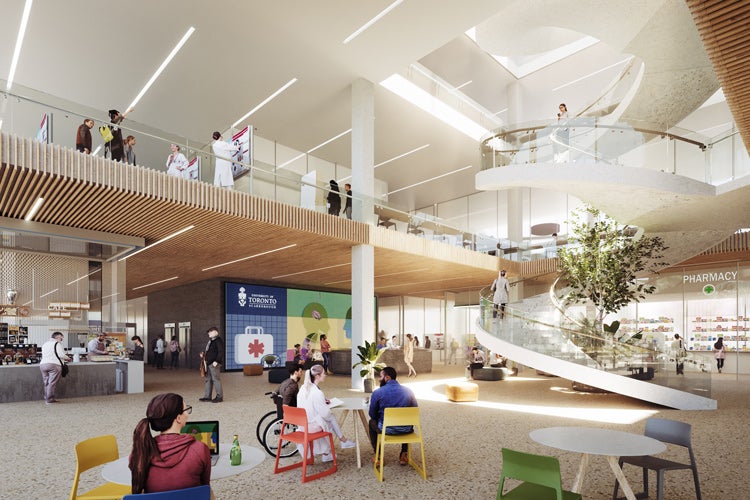U of T Scarborough and Scarborough Health Network deepen ties to advance health care in eastern GTA

Published: August 12, 2022
When medical students complete their residencies, they’re not just getting real-world experience – they help keep doctors on their toes.
“Students ask great questions. They push us to know the evidence and remember things that perhaps we have long forgotten or took for granted,” says respirologist Sacha Bhinder, interim corporate chief of medicine at Scarborough Health Network and a lecturer in the University of Toronto’s Temerty Faculty of Medicine.
“When we see that across the entire spectrum of health disciplines, it improves the knowledge base of the staff, physicians and allied health colleagues.”
That’s among the reasons U of T Scarborough and Scarborough Health Network (SHN), a network of three hospitals and health-care sites across the eastern GTA, are collaborating on projects that seek to revitalize health care in Scarborough, strengthen medical research and training, and have a widespread positive impact on community health.
As part of that ongoing effort, SHN and U of T Scarborough will co-host Shaping the Future of Care 2022, a conference bringing together academics, health-care professionals and community members in the eastern GTA. The two-day conference, which takes place on Nov. 25 and 26 at U of T Scarborough’s Highland Hall, will cover information on the Scarborough Academy of Medicine and Integrated Health (SAMIH), ideas and innovations in health-care, and updates on work to establish Scarborough as a leader in health-care research and education. Specific topics include lessons from the pandemic, innovations in education, continuing medical education and medical science updates, integrated health, mental health and community health.

A rendering of the atrium in the upcoming Scarborough Academy of Medicine and Integrated Health (SAMIH) at U of T Scarborough.
SHN has long been an affiliated teaching site for U of T’s department of family and community medicine and hosts residencies for medical students. U of T Scarborough’s Highland Hall was also the location of a COVID-19 assessment centre and several vaccine pop-up clinics operated by SHN. The institutions are continuing to strengthen ties as Scarborough’s health-care system struggles to meet the region’s needs.
“This collaboration is an important opportunity at a crucial time for Scarborough,” says Irena Creed, vice-principal, research and innovation at U of T Scarborough. “Developing stronger ties between the university and the hospital will help us come together to address some of the most pressing challenges facing the health-care system.”
Recent news about shortages of health-care professionals highlights the stress currently on the system, which SAMIH will help address. Supported by the SHN, the academy will graduate up to 30 physicians, 30 physician assistants and 30 nurse practitioners, as well as 40 physical therapists and 300 life sciences undergraduates every year. Many of those students may choose to complete their residencies in SHN hospitals and health-care sites.
“SAMIH will allow those who live in Scarborough to learn in Scarborough, to receive their degree and training in Scarborough, to practice in and support the very community that they represent. This will organically build a foundation of expertise in medical education and practice across health disciplines,” Bhinder says.
Bhinder adds that the collaboration will allow more students to interact with the diverse range of patients in Scarborough, adding that “it's a valuable collection of resources coming to a community that is hungry for those resources.”
The deepening relationship between U of T Scarborough and SHN is also part of a larger goal: to create a health district in Scarborough, similar to downtown Toronto’s hospital district or Waterloo’s tech district. Such an area would rely on strong connections between institutions such as universities, health-care providers and community groups.
“A health district means institutions work closely together to understand and address the specific needs of the community, across teaching, research and innovations in health-care,” says Creed.
The need for a health district was an emerging theme at a day-long U of T Scarborough event in March, which also saw advocates, researchers and health-care experts from the eastern GTA advocate for community-based solutions.
“Scarborough has always had a strong legacy of thought-leadership in healthcare,” says David Graham, SHN’s interim president and CEO. “That history is now getting recognized with an incredible conference that will mark this time of positive change and help propel us into a bright future as a hub for healthcare study and applied research.”



